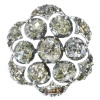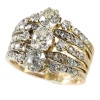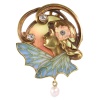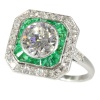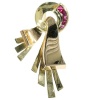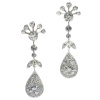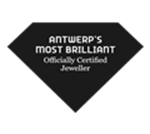We offer layaway, spread payments on the piece of your dreams. Ask us for details. Free insured shipping on all orders !!!
Alloys and Metal Standards

What exactly is an alloy, and how do different metal combinations affect its properties? Which alloys are considered superior, and what determines their value?
An alloy is a fusion of different metals, creating a material with distinct properties that differ from those of its individual components. In jewellery, an alloy must contain a minimum percentage of gold, silver, or platinum to be considered a precious metal.
Pure gold is classified as 24-carat, marked as 999/1000 or 100% fine gold. A 14-carat gold alloy consists of 14 parts gold out of 24 (equivalent to 585/1000 or 58.5% gold), with the remaining 10 parts composed of other metals. These additional metals influence key characteristics of the alloy, such as colour, hardness, flexibility, and elasticity. While adjusting the colour is an obvious reason for alloying, other, less visible properties are just as important to specialists who refine alloys for specific purposes.
For example, if a gold alloy is intended for a spring mechanism that must retain its tension over time, it requires greater elasticity than an alloy used by a goldsmith or silversmith for shaping and crafting jewellery.
Although 1 gram of 22-carat gold has a higher intrinsic value than 1 gram of a lower-carat alloy, jewellery made from 22-carat gold is more susceptible to wear and deformation due to gold’s natural softness.
The absence of universal alloy standards across countries is a result of historical developments, shaped by national laws, medieval guilds, and traditional craftsmanship. While the intrinsic value of an alloy is largely determined by its gold content, it would be misleading to categorically label one alloy as superior to another. The saying "When in Rome, do as the Romans do" seems particularly fitting in this context.
Sterling silver, composed of 925/1000 parts pure silver, is neither inherently superior nor inferior to French silver, which contains 950/1000 parts pure silver. Likewise, German silver (800/1000) and Danish silver (830/1000) are not necessarily better or worse. The difference in value between these alloys is negligible, even in large quantities. In my view, preferences for one type of silver over another are often influenced more by national tradition than by objective technical advantages.
Platinum is typically used in high-purity alloys, most commonly at a standard of 950/1000.



